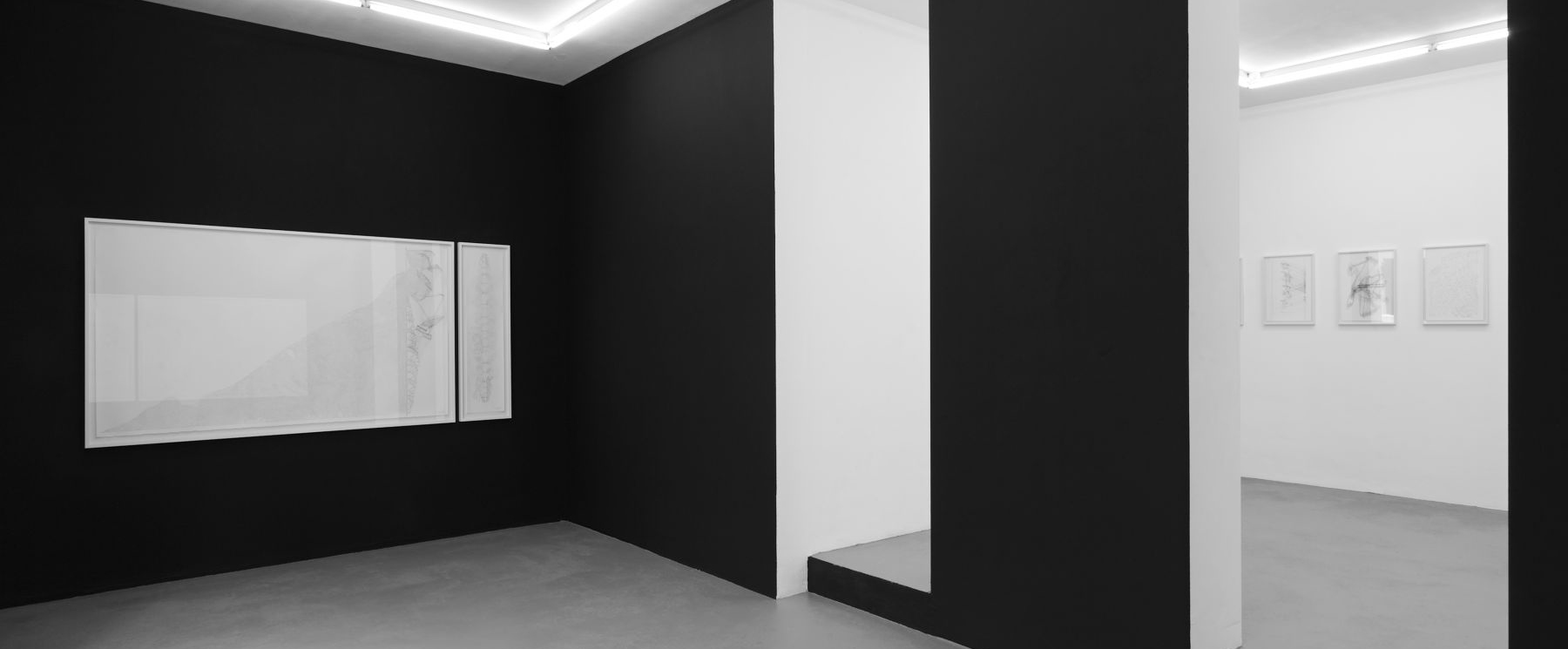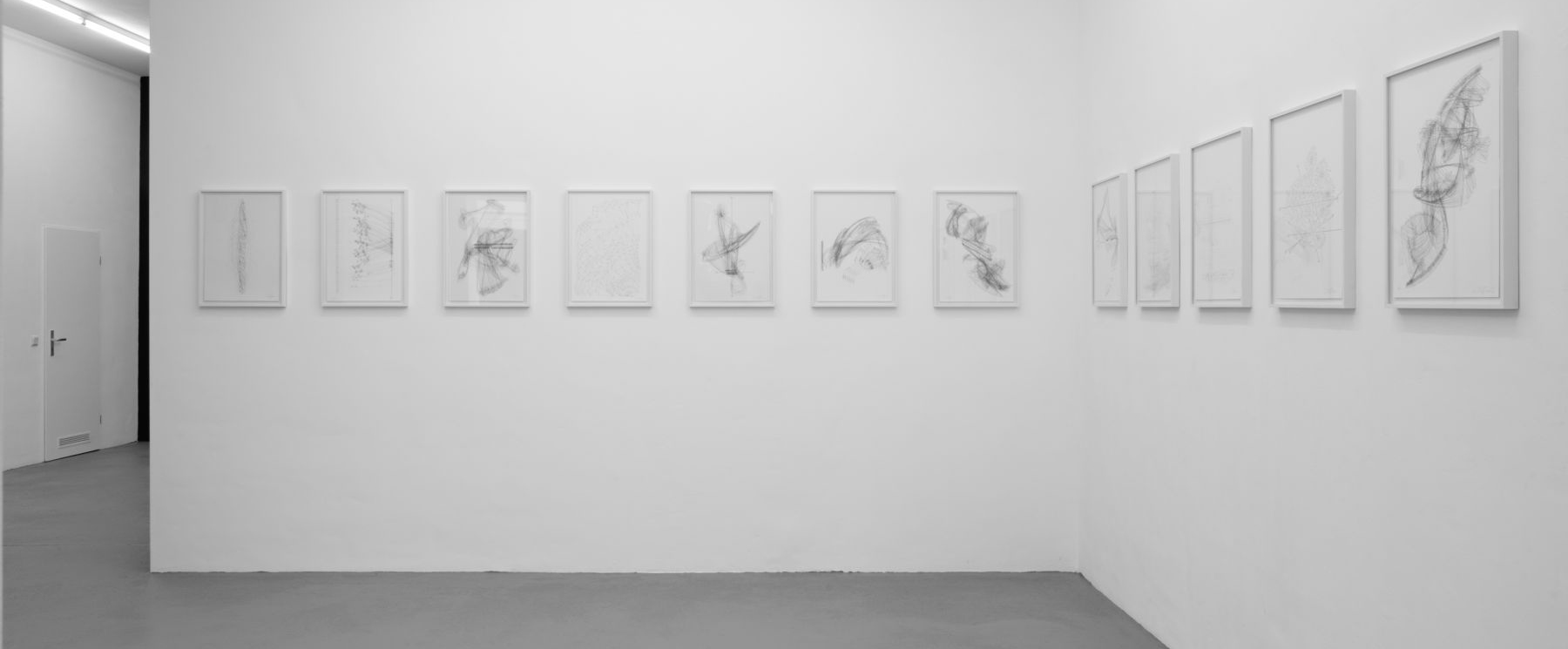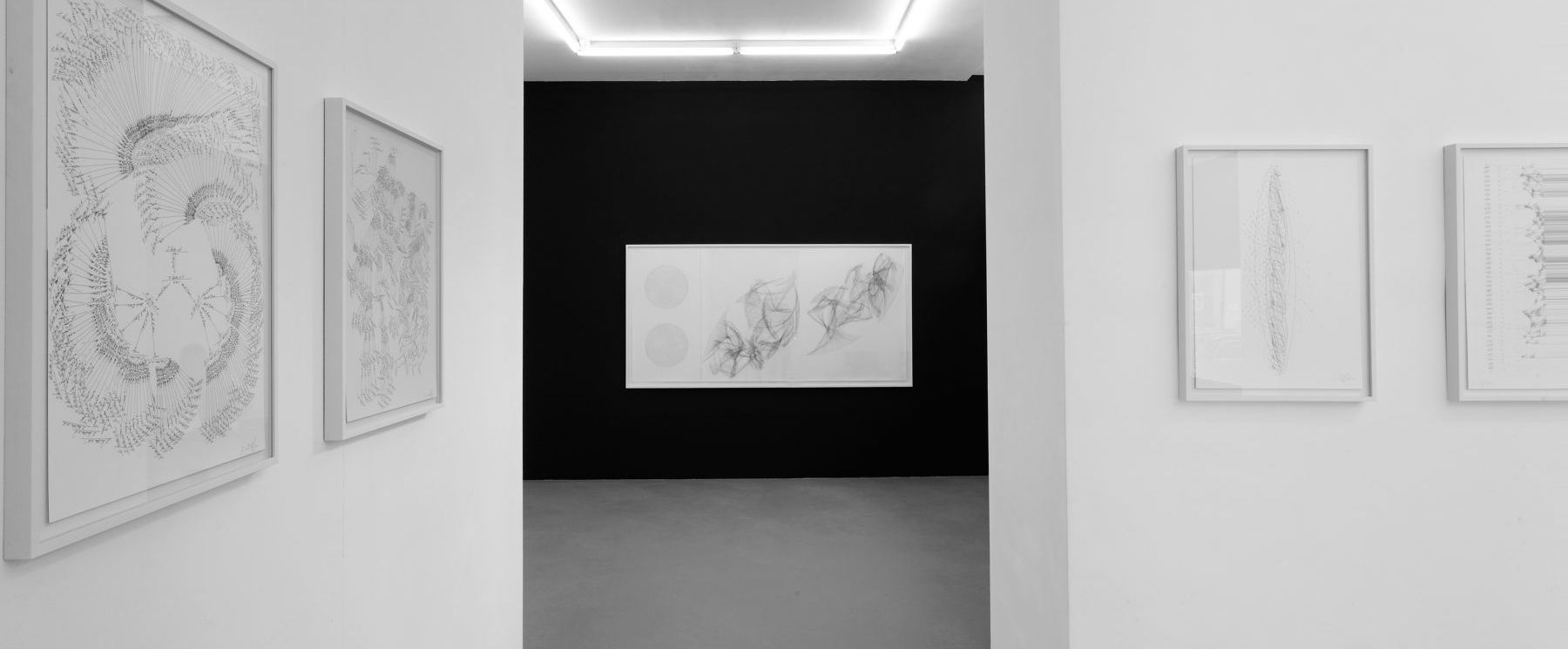Jorinde Voigt Konglomerat
31.08.2007 - 20.10.2007The Systems of Order by Jorinde Voigt (born 1977/ lives in Berlin) are reminiscent of diagrams and lists. With their degree of abstraction, calmness and concentration her works remind us of the diagonal lines in Minimal Art, e.g. works by Hanne Darbovens.Still, there is a prevailing difference of almost historically paradigmatic characters.
However, systems by Voigt as well as Darboven function as numeric concepts. They play with progression and reduction, employing musical themes as like variation and permutation. Both systems use serial ways of presentation. They get across, so that their numeric concept could be extended ad infinitum. Both contrast the chaos of possibilities with the order of a daily, strictly reglemented routine.
Nevertheless: Artists of the Minimal Art movement from the 60s to the 80s like Kawara and Darboven have worked against ›loss‹ by reconstructing time. Kawara has been concerned with life and death, indeed his own life. In the first place, his art just states the sheer fall off Kawara being alive- a very modest statement. His work becomes powerful by every man being in the future having to share time and life within his numerical systems.
Voigt’s abstractions do not state a presence within factual time. They do not position the subject within history or express its faint. History does not seem to be an issue at all. Catching the spirit of posthistory, Jorinde Voigt constructs the invisible in front of our eyes. Our being is disabled to become real, visible. Infinity seves as a base for an ongoing process, flourishing, expanding or exploding into the negative. Thematic sequences are used in contrast to Minimal Art. They are not longer about the persisting of the individuum within eternal, hostile systems. Now, they show and create irregular, dynamic processes within seemingly chaotic forces influencing growth, time and life.
Voigt’s works base on the idea, that all is a process of tensions, equalines and disseminations- never only a result. There is no being manifesting itself within the pace of history. There is only replenished eternally noisy quietness with elements. Developing and perishing. Our perception and phantasy, the picture in the mind and its abstraction are all part of what we call reality.
Jorinde Voigt does not need epistemic anchor points in the foundation of historic eternality; she uses knots and ereates fields of forces within vistas drawn through. Structural dynamics create the unexpected and set up a world in which the invisible and possible form the key element of reality.
Adina Pompescu, Berlin





